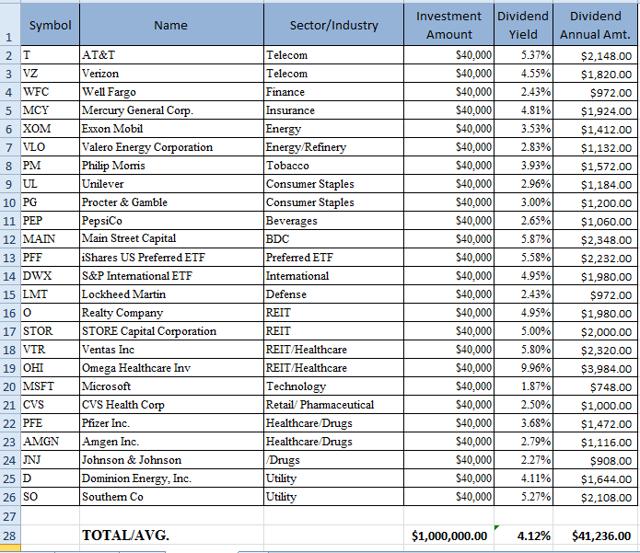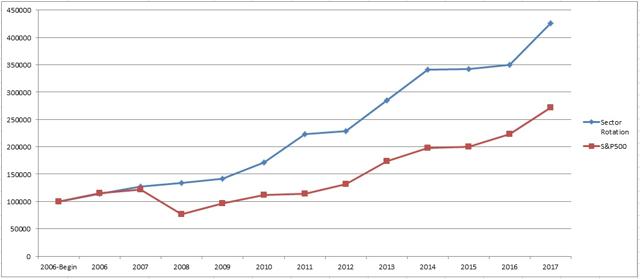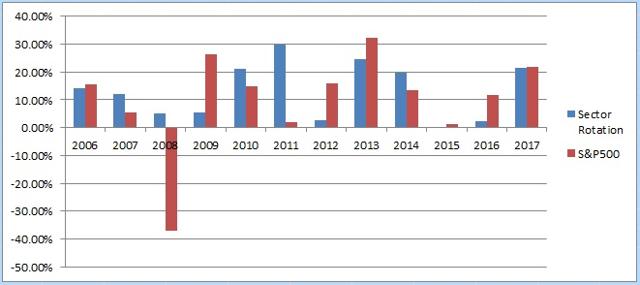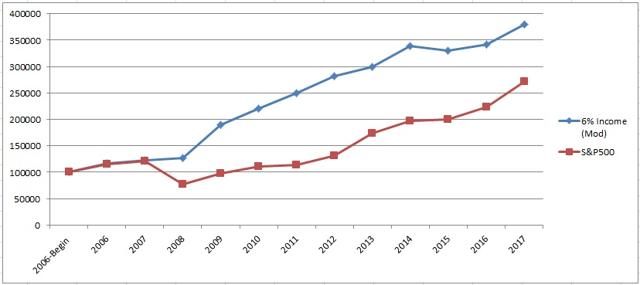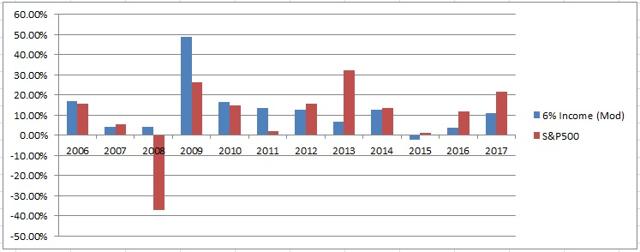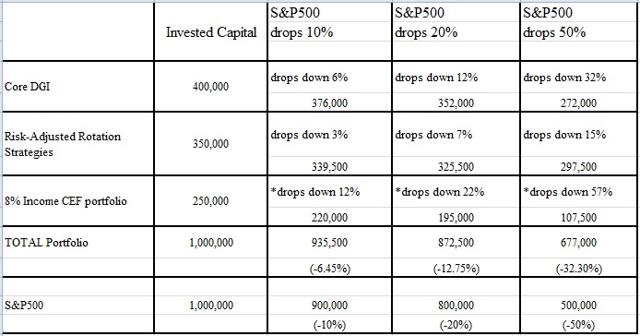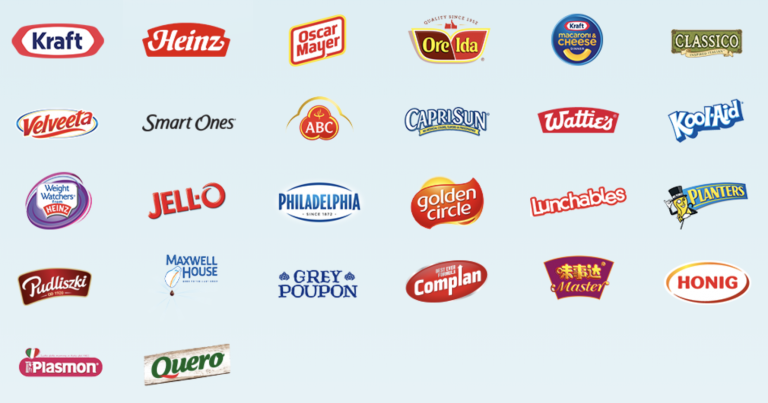Retirement Savers Are Turning to Dividend Stocks for Income. Here’s How to Use Them in Your Portfolio.
For investors who are saving for retirement, dividend stocks are a crucial building block—with reinvested payouts juicing returns during the preretirement phase and providing crucial income to retirees during the drawdown phase.
Indeed, the once-sleepy world of dividend investing is hot. With their attractive income and yields, dividend stocks not only offer solid returns in an era of ultralow bond yields that doesn’t appear to be ending soon, but also hold the promise of price appreciation. The S&P 500 index’s yield…
Passive income: 15 ways to let the money flow in
For many people, toiling for a living isn’t fun.
There can be lengthy commutes, dress codes, annoying coworkers, unreasonable supervisors, taxing physical labor, insufficient vacation time, heavy workloads, and a lack of appreciation, among many other things.
Thus, it’s easy to dream of money just arriving, without our having to clock in to earn it. Fortunately, passive income streams don’t have to be a dream. There are many sources, with examples including REIT dividend income, residual money, real-estate investments, interest, and other income-generating assets. Here’s a look at 15 of them — see which opportunities could work for you.

1. Stock dividends
One of the simplest ways to enjoy passive income streams is to buy stock in healthy and growing companies that pay dividends. Better still, look for dividends that have been increased regularly at a good clip (many companies often hike their payouts annually) and that have room for further growth, as evidenced by a dividend payout ratio of around 70% or less. The payout ratio is the amount of the annual dividend divided by the trailing 12 months’ earnings per share. It reflects the portion of earnings being paid out in dividends. The lower the ratio, the more room for growth. A ratio above 100% means the company is paying out more than it earns, which isn’t too sustainable. Here are some examples of stocks you might consider and research further:
|
Stock |
Recent dividend yield |
|
AT&T |
5.3% |
|
National Grid |
5% |
|
Duke Energy |
4.5% |
|
Verizon Communications |
4.5% |
|
Pfizer |
3.7% |
|
Flowers Foods |
3.5% |
|
General Motors |
3.4% |
|
China Mobile |
3% |
Data source: Yahoo! Finance.
2. REIT dividends
Another kind of dividend to collect is from real estate investment trusts, or REITs. They’re companies that own real-estate-related assets, such as apartments, office buildings, shopping centers, medical buildings, storage units, and so on — and they are required to pay out at least 90% of their earnings as dividends. They aim to keep their occupancy rates high, collect rents from tenants, and then reward shareholders with much of that income. If you’re interested in real estate as a way to make money, check out these examples of REITs to consider as investments:
|
REIT |
Property focus |
Recent dividend yield |
|
Iron Mountain |
Document storage |
6.6% |
|
Welltower |
Healthcare |
5.9% |
|
Realty Income |
Retail |
5% |
|
Public Storage |
Storage units |
4.1% |
|
Host Hotels and Resorts |
Hotels |
3.9% |
|
Digital Realty Trust |
Data centers |
3.5% |
Data source: Yahoo! Finance.
3. Stock appreciation
Another way to wring income out of stocks, even if they don’t pay dividends, is to buy stocks that you expect will appreciate in value over time and then, when you need income, sell some shares. If you have a fat portfolio of such stocks when you retire, you might sell some shares every year to create a cash stream for yourself. Studying and choosing the stocks that will perform very well for you is easier said than done, though, so if you don’t have the interest, skills, or time to become your own stock analyst, consider simply investing in a low-fee broad-market index fund or two, such as one based on the S&P 500. Here’s how much you might accumulate over several periods if your investments average 8% average annual growth:
|
Growing at 8% for … |
$5,000 invested annually |
$10,000 invested annually |
$15,000 invested annually |
|
10 years |
$78,227 |
$156,455 |
$234,682 |
|
15 years |
$146,621 |
$293,243 |
$439,864 |
|
20 years |
$247,115 |
$494,229 |
$741,344 |
|
25 years |
$394,772 |
$789,544 |
$1.2 million |
|
30 years |
$611,729 |
$1.2 million |
$1.8 million |
Calculations byauthor.
4. Interest
Among the many passive-income opportunities that exist, interest is a very popular one, along with dividends. Unfortunately, we’ve been living in an environment of ultra-low interest rates for many years now, so even a savings account with $100,000 in it might only grow by $1,000 or $2,000 per year. Interest rates seem to be rising, though, so take heart — and know that in many past years, bank accounts and CDs and bonds have paid rates of 5%, 8%, and even 10% or more.

5. Annuities
While stocks are terrific income producers, they can be volatile. Every few years, the stock market tends to stagnate or drop for a while before recovering, and that can be problematic if you were counting on your stocks having a certain value at a certain time. One way to lock in an income stream is by buying a fixed annuity (as opposed to variable or indexed annuities, which can have steep fees and overly restrictive terms). Annuity contracts will be more generous when interest rates are higher, but here’s how much income they might deliver at recent rates:
|
Person/people |
cost |
Monthly income |
Annual income equivalent |
|
65-year-old man |
$100,000 |
$541 |
$6,492 |
|
70-year-old man |
$100,000 |
$620 |
$7,440 |
|
70-year-old woman |
$100,000 |
$579 |
$6,948 |
|
65-year-old couple |
$200,000 |
$921 |
$11,052 |
|
70-year-old couple |
$200,000 |
$1,019 |
$12,228 |
|
75-year-old couple |
$200,000 |
$1,160 |
$13,920 |
Data source: immediateannuities.com.
6. Rental property income
Income-generating assets are another of many passive-income opportunities. A classic example is making money in real estate via owning rental properties. It can seem perfect: You buy an apartment building or house, rent it out, and then sit back and collect checks every month from your tenants. The reality isn’t always so rosy, though. For one thing, you’ll need to maintain and repair the property, as well as paying taxes on it and insuring it. It may not always be occupied, either. You may have trouble finding tenants, or finding tenants who pay their rent reliably. Some tenants may damage the property, and others may be hard to get rid of. You’ll be the one they call in the middle of the night if the roof is leaking, and you’ll have to clean and perhaps freshen up the property between tenants. You can outsource much of this to a property management company, but it will take a cut of your income, often about 10%.
7. Pay off debt
You might not think of paying down debt as an income-generating activity, but it kind of is. Think of it this way: If you owe $10,000 and are paying 20% interest on it, that’s $2,000 in interest payments annually. Ouch. Pay off that $10,000, though, and you’ll be keeping that $2,000 in your pocket. It’s very much like earning a guaranteed 20% return on the debt that you retire, and 20% annual returns are way more than you can expect from the stock market or elsewhere. Note that some credit cards may be charging you 25% or even 30% interest, so paying such debt off as soon as possible is a no-brainer financial goal.

8. Credit card rewards
Speaking of credit cards, if you don’t use them to rack up debt, you can instead use them to generate income streams for you — via their cash-back or rewards programs. Some cards offer flat-rate cash-back percentages up to about 2%. Others target certain kinds of spending or certain retailers. If you spend a lot at Amazon.com, for example, you can get a card that rewards you with 5% cash back there — which can really add up. (It’s not hard to spend $250 per month at Amazon, which is $3,000 per year — enough to earn $150 back.)
Other stores with associated credit cards include Target, Costco, Gap, Lowe’s, TJX, Toys R Us, and Wal-Mart. Many offer 3% to 5% in cash back or discounted prices, and many offer other perks, too, such as free shipping on items purchased at the sponsoring retailer, while others might let you return items without a receipt, or will donate money to charity whenever you use the card. If you travel a lot, you can use travel-related credit cards to rack up lots of points and rewards that can be used instead of cash, keeping more cash in your pocket.
9. Residual and royalty income
You can also generate residual and royalty income for yourself by producing things that might then pay you again and again. This isn’t 100% passive income, as there’s some initial work involved, but if all goes well, once you’ve done the work, you’ll be paid repeatedly over a possibly long period of time.
For example, you might take photos and have them available for a fee at sites such as shutterstock.com or istockphoto.com. Similarly, you can create and upload designs at sites such as zazzle.com and cafepress.com, where people can buy them imprinted on shirts, mugs, and so on. Similarly, if you write an e-book (which can be as short as 6,000 or so words), you might find that people are interested in buying it, perhaps via Amazon.com’s direct publishing service.
10. Sell stuff online
Speaking of selling stuff online, that’s another mostly passive way to generate income. You could generate an income stream for a while by clearing out your basement or attic and selling items on eBay or elsewhere. This can be especially effective with collections. If you have lots of games or jigsaw puzzles that are taking up space and not being used, they can be great sources of income. You might reap a lot by selling new and used clothing you don’t need.

11. Rent out space in your home
Not everyone is eager to do this, but consider renting out space in your home for extra income. You could take in a full-time boarder, for example, but you needn’t be that extreme. Instead, consider renting out an extra room via a service such as airbnb.com or homewaway.com. If you do so for just 20 nights a year and charge $100 per night, that’s $2,000 in pre-tax income! If your home is in a desirable spot, maybe you can rent out the whole house for just two weeks in the summer, charging $2,000 per week and collecting $4,000.
12. Lend money
Here’s an option that’s still unfamiliar to many people but that has been growing in popularity: Lending money on a peer-to-peer basis. A major website for this is lendingclub.com, where investors have earned returns in the neighborhood of 4% or more annually. You’ll be lending money to fellow individuals who have had trouble borrowing money through other avenues, and you can spread your dollars across many such folks to reduce the risk.
13. Refinance your mortgage
Refinancing your mortgage is a passive income generator? Yup, it sure can be. If you’re making monthly mortgage payments of $1,600 now, and you can reduce that to $1,300 per month by refinancing your home loan at a lower interest rate, you’ll keep $300 in your pocket each month. Of course, refinancing isn’t free — there are closing costs. Still, if you plan to stay in your home long enough to more than break even, refinancing is well worth it. As an example, if your closing costs are $6,000 and you’re saving $300 per month, you’ll break even in 20 months — less than two years!
14. Get a reverse mortgage
Refinancing may not be worth it to you, depending on your situation and interest rates, but maybe a reverse mortgage is just what you need. It’s typically an option well worth considering for those in or near retirement. A reverse mortgage is essentially a loan, with the amount borrowed not having to be repaid until you die, sell your home, or stop living in it (perhaps because you moved to a nursing home or died). At that time, the home can be sold to cover the debt — or your heirs can pay it off and keep the home. Reverse-mortgage income is often tax-free, which is another big plus. The amount you get can be delivered in monthly installments, providing very passive and reliable income in retirement.
15. Affiliate marketing
If you have a blog or some other property that has visitors, you might profit passively via affiliate advertising. For example, imagine that you write a blog about movies. You might review some books about movies, and then link to them on Amazon so you get a cut of the purchase price when anyone buys books through the links. If you blog about hiking, you might promote some hiking gear you recommend on the blog, again generating passive income if anyone buys any of it.
These are some of the main ways to earn passive income for yourself. There are others that you can find by doing further online exploration. (For example, you might agree to have your car wrapped in an advertising message and then collect cash just for driving around town in your own vehicle.)
Consider some of the ideas above, because the income they offer might significantly improve your retirement or help you achieve other important financial goals. Some of them might even turn out to be fun.
John Mackey, CEO of Whole Foods Market, an Amazon subsidiary, is a member of The Motley Fool’s board of directors. Selena Maranjian owns shares of Amazon, Costco Wholesale, National Grid, Realty Income, and Verizon Communications. The Motley Fool owns shares of and recommends Amazon, eBay, National Grid, and Verizon Communications. The Motley Fool recommends Costco Wholesale, Lowe’s, The TJX Companies, and Welltower. The Motley Fool has a disclosure policy.
The Motley Fool is a USA TODAY content partner offering financial news, analysis and commentary designed to help people take control of their financial lives. Its content is produced independently of USA TODAY.
Offer from the Motley Fool:The $16,122 Social Security bonus most retirees completely overlook
If you’re like most Americans, you’re a few years (or more) behind on your retirement savings. But a handful of little-known “Social Security secrets” could help ensure a boost in your retirement income. For example: one easy trick could pay you as much as $16,122 more… each year! Once you learn how to maximize your Social Security benefits, we think you could retire confidently with the peace of mind we’re all after. Simply click here to discover how to learn more about these strategies.
Retirement: Where Could You Get Safe 6% Income?
The stock market was on a roll all year long last year, and the rally continues in the new year. Most investors love the idea of rising markets and for a good reason. It gives everyone a feeling of getting wealthier. However, it becomes challenging if you need to put new money to work in the market. Also if you invest in 401(k) every paycheck, and still have more than 10-15 years to retire, you are getting less of a bargain each passing month. In fact, a fast-rising market is sort of a bad deal for young investors whose time horizon is long because they will be getting less number of shares for the same amount of money.
On the other hand, for retirees or near-retirees, a rising or a bull market is actually a very good thing, since they are not putting much of new money to work. On the flip side, a prolonged bear market early in the retirement can be devastating.
However, most retirees do not invest for total return, but for a regular stream of income while preserving capital. So, the big question that faces every retiree is how to get safe income without dipping into or losing principle. Obviously, bank or CD deposits pay next to nothing. Bonds have been in a bull market for nearly three decades and are expected to lose value in a rising interest rate environment. Yet, there are several viable alternatives; however, none is without flaws or risks. For our examples, we would assume that our typical investor needs $40,000 of annual income from the investment portfolio. Rest of the spending-need will be met by social security or other fixed income coming.
We will discuss three options; the first two only provide 4% income, whereas the third option will aim to provide 6% income with less volatility and smaller drawdowns.
Option 1: Traditional 4% Withdrawal Method
It is often said that as long as you have 25 times of your annual expenses, that should suffice. The traditional advice goes something like this:
- Keep 1 or 2 years of expenses in cash like securities.
- Invest the balance in a 60:40 or 70:30 stocks/bonds portfolio (generally in mutual funds or ETFs) and rebalance every year.
- Withdraw inflation-adjusted 4% every year to re-fill the 2-year cash account.
Here are some potential problems with the above advice:
- This was designed with an average retirement lasting 25 years. However, every person is an individual, and the term ‘average’ loses its relevance when we are talking about an individual. Moreover, average lifespan has been increasing, and it requires that one must work much longer than traditional retirement age.
- To be able to live off 4% of the portfolio, usually one requires a large portfolio size. Though, this can vary from person to person, depending upon their spending expenses. For our example, to be able to draw $40,000 annual income, the retiree will need an investment portfolio of $1 million. Anything less will result in an income gap. To make matters even worse, the two-year cash component would be required in addition to $1-million portfolio. After adding 2 years of cash-component, the investment capital will need to be roughly $1.1 million.
- This approach is particularly risky if there is a prolonged bear market in the early phase of retirement. A prolonged bear market at the onset of withdrawal phase can lead to large depletion of the portfolio, which can be difficult to recoup.
- Another potential problem would be a scenario where the retirement lasts much longer, say, 35 or 40 years long? Can you afford to be out of money at the age of 90? Money should be the last thing that you should be worried about at that age. In our opinion, to have a safe and worry-free retirement (at least from money perspective), you will need a retirement fund, which is roughly 35 times (instead of 25 times) of your annual expenses.
Option 2: Conservative Dividend Stock Portfolio – 4% Yield:
This option is nothing new, in fact, it is a very popular approach among DGI (Dividend Growth Investing) believers. If you still have a few years before you actually need to live off the income from your investments, and you buy and accumulate shares over a long period of time, this is a solid approach.
For a DGI portfolio of solid, large-cap, blue-chip companies, it takes something around 5+ years before it can start throwing 4-5% or higher income. Typically, such a portfolio will start with an average yield of 3% or less, and with dividend reinvestment and yearly dividend increases, the annual yield should get to 4% plus in 5-7 years. Alternatively, if you mix in a few REITs and higher yielding but relatively safe stocks such as AT&T (T) and Verizon (VZ), you could have a starting yield of 4%. Nonetheless, it is generally advisable that you start a DGI portfolio a few years before you actually plan to retire and reinvest the dividends until you actually retire, to be able to draw 4 to 5% income in retirement. Afterwards, we can safely assume that any inflation would be met by dividend increases.
This option is solid and much safer than option-1 since we are never withdrawing or depleting the capital. Another advantage is that if for any reason, the dividend income does not grow sufficiently for some years matching the inflation that would be a signal to tighten the belt temporarily and reduce spending for few years. The major flaw is that one needs to have a large sum of capital to generate the income. Besides, some folks may suggest that our investor is going to leave too much money behind. But in our view, that is a good problem to have. They could leave it for their heir or their chosen charity or some combination thereof. There may also be issues surrounding RMD (required minimum distribution) if the money is in an IRA. RMD situations can vary greatly from person to person, and as such, it is a topic too large to cover here in this article. But, generally, a large portion of RMD could be met by the dividend income generated.
Below is a table of 25 sample dividend stocks that if invested equally (based on prices as of 01/23/2018), will provide a starting yield of 4.12%. However, the most conservative investors should aim for only about 3% starting yield.
Option 3: Nearly 6% Safe Income With Smaller Drawdowns
After all, the stock market is at an all-time high, and the run may continue for much longer. However, we know that the bull market is not going to last forever. The longer the bull-run continues, higher will be the risk of a major correction. This option is worth considering if you constantly worry about the eventual market downturn and what it is going to do to your portfolio. If your income needs are higher than 4% of the size of your portfolio and you cannot tolerate very large drawdowns, this option is worth a look.
Is the income really safe?
We believe so, on a relative basis, though nothing is 100% safe in the investing world. Now, we have seen that both option-1 and option-2 require high starting capital to be able to generate a reasonable income. In this option, we are trying to generate higher yields with less capital, and we are mitigating any additional risks by using multiple strategies. Actually, this option results in higher income, market matching total returns and smaller drawdowns. We will try to demonstrate this in a minute.
We will invest in three different portfolios, or we can call them baskets, or buckets, or any other name that you may like. For younger folks though, we recommend an additional fourth bucket for growth.
As in option 1 and 2, let’s assume we have total investment capital of $1,000,000.
Bucket 1: Core DGI Portfolio (40%)
Invested Capital: $400,000 (40%)
Total Return Target: 10-12%
Dividend Target: 4%
No retirement portfolio could ever be complete without a DGI bucket. This should make the foundation or “Core” of our investments. Just like the foundation of a house, the foundation of our portfolio needs to be strong. You should choose the strongest stocks which are available at a fair price while applying the following criteria:
- Large-cap, blue-chip company with a sizable moat in its industry.
- Dividend yield at least matching S&P500, or preferably 3%.
- Must have raised the dividends in the previous 10 years. Better yet 20-25 years. CCC list by SA Author David Fish is a good place to start.
- Not more than 3 or 4 names from the same sector. At least one company from each sector.
- Reasonable valuation at the time of buy. Alternatively, buy using DCA (dollar cost average) approach.
For the DGI portion, we could use the same stocks as listed under Option 2 (Conservative Dividend Portfolio) above in this article.
Here is the same table of 25 stocks as listed before but with a total allocation of 40% (yield as of 01/23/2018).
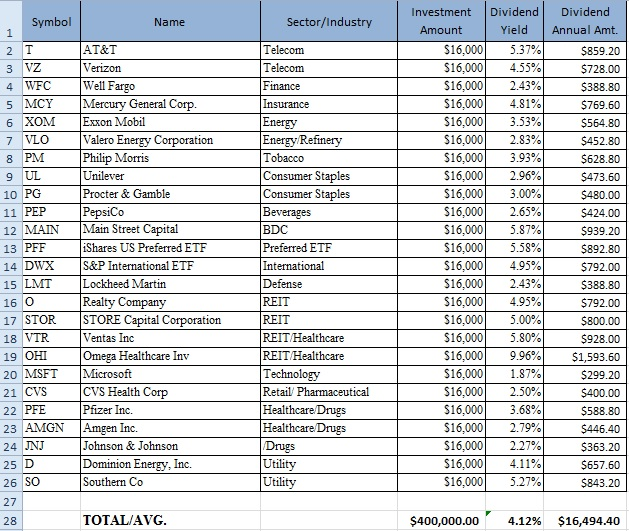
If you absolutely do not like to own and manage individual stocks, your second best option will be to have some low-cost dividend-centric ETFs.
|
ETF Name |
Symbol |
Expense/fee |
Distribution (12 month Yield) |
Objective |
|
Vanguard High Dividend Yield ETF (VYM) |
VYM |
0.08% |
2.81% |
High current yield |
|
Vanguard Dividend Appreciation ETF (VIG) |
VIG |
0.08% |
1.88% |
Dividend growth |
|
WisdomTree U.S. Quality Dividend Growth Fund (DGRW) |
DGRW |
0.28% |
1.80% |
Dividend growth |
|
WisdomTree SmallCap Dividend Fund (ETF) (DES) |
DES |
0.38% |
2.89% |
Small-cap dividend |
|
Powershares KBW Premium Yield Equity REIT ETF (KBWY) |
KBWY |
0.35% |
7.25% |
REIT dividend |
|
iShares U.S. Preferred Stock ETF (PFF) |
PFF |
0.47% |
5.58% |
Preferred dividend |
|
SPDR S&P International Dividend ETF (DWX) |
DWX |
0.45% |
3.85% |
International |
|
AVERAGE |
0.30% |
3.72% |
Bucket 2: Risk-Adjusted Portfolio
Invested Capital: $350,000 (35%)
Total Return Target: 10-12%
Income Target:6%
We will suggest two different strategies here. As such, you could either choose one of them or have both of them by dividing this capital between the two to provide better diversification. Of course, there will be more work if you decide to choose both of them.
Strategy#1:
Sector Rotation:
In this strategy, even though the dividend yield will be similar to S&P500 (generally around 2% most times), but we would assume that rest could come from withdrawals. The main advantage would be that we will be invested in the best performing two sectors of the economy at any time rather than invested in all 10 sectors. If none of the sectors are performing better than the risk-free assets, then we will be invested in 10-year treasuries and/or cash. Though the strategy can have so many variations, the backtesting results from one such strategy are provided below. The look-back period for measuring performance is three months with monthly rotation.
Strategy#2
Modified 6% Income Strategy:
We are calling it modified because it is slightly different from our original ‘ 6% Income Strategy’, which is being used in our Marketplace service. However, the performance is comparable. This strategy invests in four CEFs (EVT, FFC, KYN, NMZ) along with TLT/IEF and using SHY or CASH as the risk-hedging asset. It is normally invested in the four CEFs (25% each) as long as each of the CEF has performed better than the risk-free assets with a 3-4 months look-back period. The look-back period can vary from 3-6 months or a combination of more than one, say 50% weight each to 3-months and 6-months. If any of the CEFs has not performed well enough, then the specific CEF will be replaced by 10-year or 20-year treasury fund for the next month. The rotation is on a monthly basis.
The main advantage of this strategy is that it would create a consistent income of about 6% due to high distribution from the CEFs. However, a word of caution: This strategy may not perform as well during a raging bull market as we see currently. However, it should make up during the times of stress or panic and preserve the capital at the same time. Just to provide a general idea, the back-testing results from one such strategy going back to the year 2006 are presented below:
List of securities:
- Eaton Vance Tax-Advantaged Dividend Income Fund (EVT)
- Flaherty & Crumrine Preferred Securities Income Fund (FFC)
- Kayne Anderson MLP Investment Company (KYN)
- Nuveen Municipal High Income Opportunity Fund (NMZ)
- iShares 20+ Year Treasury Bond ETF (TLT)
- iShares 7-10 Year Treasury Bond ETF (IEF)
Bucket 3: CEFs portfolio – 8% Income
Invested Capital: $250,000 (25%)
Total Return Target: 10%
Income Target: 8%
This is similar to our regular ‘8% Income CEF’ portfolio. We recently provided an update here.
|
Security Symbol |
Security Name |
Type of CEF |
Investment dollars |
Current Dividend Yield |
Dividend amount |
|
|
1. |
PCI |
PIMCO Dynamic Credit Income Fund ( PCI) |
Debt & Mortgage securities |
$25,000 |
8.83% |
$2,207.50 |
|
2. |
PDI |
PIMCO Dynamic Income Fund ( PDI) |
Debt securities |
$25,000 |
8.88% |
$2,220.00 |
|
3. |
KYN |
Kayne Anderson MLP ( KYN) |
Energy MLP |
$25,000 |
9.01% |
$2,252.50 |
|
4. |
RFI |
Cohen & Steers Tot Ret Realty ( RFI) |
Realty |
$25,000 |
7.70% |
$1,925.00 |
|
5. |
RNP |
Cohen & Steers REIT & Pref ( RNP) |
REIT/Pref |
$25,000 |
7.48% |
$1,870.00 |
|
6. |
UTF |
Cohen & Steers Infrastructure ( UTF) |
Infrastructure |
$25,000 |
8.03% |
$2,007.50 |
|
7. |
JPC |
Nuveen Pref & Income Opps Fund ( JPC) |
Preferred |
$25,000 |
7.81% |
$1,952.50 |
|
8. |
STK |
Columbia Seligman Premium Tech ( STK) |
Technology |
$25,000 |
8.03% |
$2,007.50 |
|
9. |
NMZ |
Nuveen Muni High Inc Opp ( NMZ) |
Utilities |
$25,000 |
5.75% |
$1,437.50 |
|
10. |
HQH |
Tekla Healthcare Investors ( HQH) |
Health Care |
$25,000 |
8.60% |
$2,150.00 |
|
TOTAL |
$250,000 |
8.01% (average) |
$20,030 |
Total Income from Combined Portfolio:
|
Invested Capital |
Total Return (over 10 year period) |
Income |
|
|
Core DGI |
400,000 |
10-12% |
16,494 (~4% dividends) |
|
Risk-Adjusted Rotation Strategies |
350,000 |
10-12% |
21,000 (~6% distributions or withdrawals) |
|
8% Income CEF portfolio |
250,000 |
10% |
20,030 (~8% distributions) |
|
TOTAL |
$1,000,000 |
10-11% |
$57,524 (~5.75%) |
Let’s see the risk and drawdown potential:
One method is to see how specific security would behave in a crisis or recession would be to look at how it behaved during the 2008-2009 financial crisis. Though there is no certainty that next time around it would be exactly the same, it does provide some idea. Below table assumes the net-declines in each type of security based on their respective behavior in 2008-2009.
* This is the assumed NET decline in prices after subtracting the 8% distributions.
Conclusion:
We are not advocating that the high-income strategy is the best strategy for everyone. One needs to look carefully at their personal situation, particularly the risk-tolerance. If someone has a $2 Million portfolio and his or her income needs are only 2% of the portfolio size, we think a DGI strategy would be great and cover all bases. However, on smaller portfolios, it becomes difficult to raise sufficient income solely by index investing or even DGI strategy. What we need is a little more diversified approach in such situations, such as the option-3 described above. It provides much higher income, better strategic and asset diversification, market-matching returns and one-third less drawdowns.
Disclaimer: The information presented in this article is for informational purposes only and in no way should be construed as financial advice or recommendation to buy or sell any stock. Please always do further research and do your own due diligence before making any investments. Every effort has been made to present the data/information accurately; however, the author does not claim 100% accuracy. The stock portfolio presented here is a model portfolio for demonstration purposes; however, the author holds many of the same stocks in his personal portfolio.
Author’s Note: The Passive DGI Core portfolio is published as free-content. Other portfolios such as 8% Income CEF portfolio, 6% Income Risk-Adjusted portfolio, 401(k)-IRA-Conservative portfolio, Sector-Rotation ETF portfolio, and High-Growth BTF portfolio are part of our SA Marketplace service High Income DIY Portfolios. For more details or a two-week free trial, please see the top of the article just below our logo.
Disclosure: I am/we are long ABT, ABBV, JNJ, PFE, NVS, NVO, CL, CLX, GIS, UL, NSRGY, PG, MON, ADM, MO, PM, KO, DEO, MCD, WMT, WBA, CVS, LOW, CSCO, MSFT, INTC, T, VZ, VTR, CVX, XOM, VLO, HCP, O, OHI, NNN, STAG, STOR, WPC, MAIN, NLY, PCI, PDI, PFF, RFI, RNP, UTF, EVT, FFC, KYN, NMZ, NBB, HQH, JPC, JRI, TLT. I wrote this article myself, and it expresses my own opinions. I am not receiving compensation for it (other than from Seeking Alpha). I have no business relationship with any company whose stock is mentioned in this article.
Warren Buffett’s Dividend Portfolio
You can download an up-to-date list covering all of the dividend stocks owned by Warren Buffett by clicking here.
While Berkshire Hathaway itself does not pay a dividend because it prefers to reinvest all of its earnings for growth, Warren Buffett has certainly not been shy about owning shares of dividend-paying stocks. We will analyze each of Buffett’s dividend stocks in this article.
A dividend is often the sign of a financially healthy and stable business that is committed to rewarding shareholders. These are some of the qualities Warren Buffett looks for when he invests.
Berkshire Hathaway Portfolio Update
Notable Additions
Berkshire invested over $500 billion during the third quarter, picking up new positions in Restoration Hardware (RH) and Occidental Petroleum (OXY). The firm didn’t add to any of its existing positions, though.
Restoration Hardware doesn’t pay a dividend but is a disruptor in the luxury home furnishings market. The company embraces a membership model rather than running promotions, maintains elaborate showrooms, and believes it can compound its earnings 15% to 20% annually for the next 10 years.
Warren Buffett’s involvement in the furniture industry spans decades, including his 1983 purchase of a majority ownership stake in Nebraska Furniture Mart. He likely sees potential in Restoration Hardware’s unique retail strategy and believes the business has developed an enduring brand that will fuel profitable long-term growth for longer than the market is pricing in.
Buffett’s $330 million investment in Oxy’s common shares is relatively small compared to the $10 billion investment he made in the energy giant’s preferred stock in April 2019.
Investors have hammered Oxy’s shares due to concerns about the company’s pricey takeover of Anadarko, as well as the weak energy environment. Buffett seems to be a believer in U.S. shale and the price of oil improving in the long term.
Notable Reductions
Similarly, Buffett sold some more shares of Wells Fargo (-7%) but only to keep Berkshire’s position below the 10% ownership threshold allowed by regulators.
Finally, the firm continued trimming back its position in Phillips 66 (-6%), which represents just 0.25% of Buffett’s stock portfolio. Berkshire began reducing this investment in 2018 due to regulatory requirements that came with ownership levels above 10%.
However, it appears Buffett may be exiting Phillips 66 and the refinery space as he puts more focus on his new energy bet, Oxy. Refining margins typically benefit from a low price of oil, while shale producers like Oxy get hurt. Buffett’s shift in the energy space suggests he may believe oil prices are likely to head higher from here, and the market is not reflecting that likelihood in Oxy’s price.
Warren Buffett’s Investment Strategy
Warren Buffett’s portfolio remains concentrated today, and his three largest positions each account for over 10% of Berkshire Hathaway’s portfolio. The idea behind running a concentrated portfolio is that there are relatively few excellent businesses and investment opportunities in the market at any given time, and owning too many positions reduces the impact from your few best ideas.
Importantly, Warren Buffett’s investment strategy has always been focused on the concept of staying within one’s circle of competence. Buffett has said that “risk comes from not knowing what you’re doing.”
In other words, never invest in a business or industry that is too hard for you to understand. The reality is, most investment opportunities fall outside of our circle of competence and should be ignored.
Since the days of his initial partnership, Buffett’s strategy has evolved to concentrate more on buying up wonderful businesses at reasonable prices rather than digging through the bargain bin for “cheap” stocks. He looks for companies that have strong economic moats and numerous opportunities for growth.
Analyzing Warren Buffett’s Top High-Yield Dividend Stocks
1: Occidental Petroleum (OXY)
Percent of Warren Buffett’s Portfolio: 0.2%
Dividend Yield: 8.1% Forward P/E Ratio: 36.0x (as of 11/18/19)
Sector: Energy Industry: Integrated Oil and Gas
Dividend Growth Streak: 16 years
Many Oxy investors felt the company paid a steep price for this controversial purchase, further exacerbated by the costly preferred stock issued to Berkshire. In the third quarter of 2019 Buffett increased his involvement with Oxy, buying about 1% of the firm’s common stock.
Following its acquisition of Anadarko, Oxy is one of the largest oil & gas producers in America, with leading positions across key shale basins. As Warren Buffett has said, owning Oxy is essentially a bet on the price of oil and the long-term growth of the Permian basin.
Oxy’s cash flow is very sensitive to the price of oil, and the company is saddled with debt following its Anadarko deal. As a result, the stock will likely remain highly volatile until the firm’s balance sheet strengthens and the price of oil improves.
2: Kraft Heinz (KHC)
Percent of Warren Buffett’s Portfolio: 4.2%
Dividend Yield: 5.1% Forward P/E Ratio: 12.0x (as of 11/18/19)
Sector: Consumer Staples Industry: Miscellaneous Food
Dividend Growth Streak: 0 years
Kraft and Heinz have operated in the food industry for over 100 years and collectively own famous brands such as Jell-O, Velveeta, Lunchables, Bagel Bites, Philadelphia, Ore Ida, Planters, Oscar Mayer, and many others.
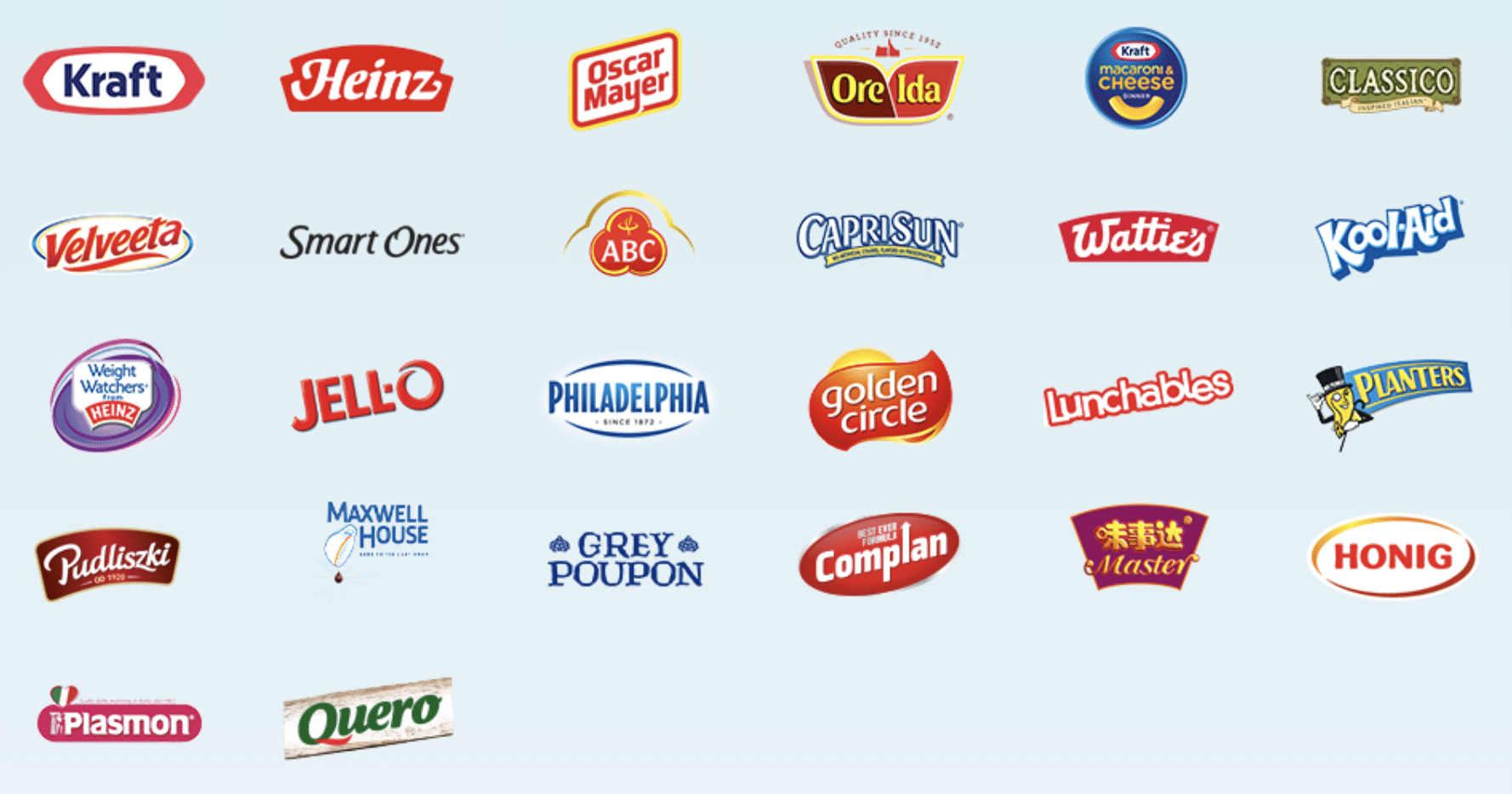
“The short term doesn’t make much difference to us, because we will be in this stock forever. This is a business with us. It’s not really a stock…It’s where the new Kraft Heinz Co. is 10, 20, 50 years from now that counts to Berkshire. These are brands I liked 30-plus years ago, and I like them today. And I think I’ll like them 30 years from now.”
While KHC seemed like another Buffett stock that could be boring and predictable for long-term income investors, several of Kraft Heinz’s major brands struggled to adapt their portfolios to the healthier eating trend.
The firm’s struggles came to a head in February 2019, when management decided to cut Kraft Heinz’s dividend to accelerate deleveraging efforts.
As Warren Buffett summarized in an interview with CNBC, he “was wrong in a couple of ways about Kraft Heinz” and ultimately overpaid for the business as its pricing power deteriorated unexpectedly:
“When you’re going toe to toe with a Walmart or a Costco or maybe an Amazon pretty soon…you’ve got the weaker bargaining hand than you did 10 years ago…
Costco introduced the Kirkland brand in 1992, 27 years ago, and that brand did $39 billion last year whereas all the Kraft and Heinz brands did $27, $26 or $27 billion.
So here they are, a hundred years plus, tons of advertising, built into people’s habits and everything else, and now Kirkland, a private label brand, comes along and with only 750 or so outlets does 50% more business than all the Kraft-Heinz brands.
So house brands, private label, is getting stronger. It varies by country around the world, but it’s bigger. And it’s gonna keep getting bigger.”
Read More: Our Analysis of Kraft Heinz
3: General Motors (GM)
Dividend Yield: 4.2% Forward P/E Ratio: 7.4x (as of 11/18/19)
Sector: Consumer Discretionary Industry: Domestic Auto Manufacturers
Dividend Growth Streak: 0 years
General Motors is one of biggest manufacturers of cars and trucks in the world. Most of the company’s sales are pickup trucks and crossovers, which carry higher margins than passenger cars.
However, the “new” GM is much stronger than its predecessor and has substantially improved its earnings power and financial health, which management hopes will allow the company to continue paying its dividend during the new industry downturn.
Buffett’s favorite holding period is “forever,” and he probably sees plenty of room for General Motors to continue growing its earnings over time as it continues cutting costs and making investments in higher-margin areas.
While the auto industry is certainly cyclical, GM appears well positioned to get through almost any environment and remain relevant for a long time to come.
4: Suncor (SU)
Percent of Warren Buffett’s Portfolio: 0.2%
Dividend Yield: 4.0% Forward P/E Ratio: 14.6x (as of 11/18/19)
Sector: Energy Industry: Integrated Oil & Gas
Dividend Growth Streak: 16 years
SU is an integrated energy company focused on developing Canada’s oil sands. Oil sands is a mixture of bitumen, sand, fine clays, silts, and water. Because it does not flow like conventional crude oil, it must be mined or heated underground before it can be processed.
In addition to its upstream exploration and production activities, the firm generates a substantial amount of its profits from midstream and downstream (refining & marketing) operations, which include a handful of refineries, lubricants and ethanol plants, and Petro-Canada retail gasoline stations. This integrated portfolio helps provide solid profits even when the price of oil is weak.
However, during the fourth quarter of 2018, Suncor’s stock price plunged to its lowest level since 2016. Berkshire pounced on the opportunity to get back into a business it knows very well at a price it liked.
Suncor is one of the most conservatively managed energy producers, but only time will tell if Berkshire is making a long-term commitment here or simply saw an opportunity to capitalize on overly pessimistic investors pushing SU’s valuation too low.
5: Wells Fargo (WFC)
Dividend Yield: 3.8% Forward P/E Ratio: 12.5x (as of 11/18/19)
Sector: Financials Industry: Major Regional Banks
Dividend Growth Streak: 9 years
Overall revenue is split almost equally between traditional loan-making operations and noninterest income from brokerage advisory services, credit card fees, commissions, mortgage originations, and more.
Banking can be a disastrous business to invest in if reckless loans are issued, so the company’s management and culture are extremely important factors. In the case of Wells Fargo, it was historically thought to be one of the highest quality and most conservatively managed banks.
Buffett also probably likes Wells Fargo for the long haul because it possesses major cost advantages over its smaller peers. The bank has more retail deposits than any other bank in America and has seen its total deposits grow from $3.7 billion in 1966 to $1.3 trillion as of the end of 2018.
As the U.S. economy continues expanding, Wells Fargo should be able to mint money with its loan book and continue earnings superior returns on equity relative to its peers.
Specifically, he commented that most of Berkshire’s best investments (American Express, Geico) were in firms that fell into trouble due to poor incentive systems that caused short-term problems. All big banks have had troubles, but he sees no reason why Wells Fargo would be inferior to other banks from investment and moral standpoints going forward.
Buffett and Munger like how the firm is correcting the bank’s mistakes and see no reason why Wells Fargo will be anything other than a large well-run bank that comes out stronger from this. Munger even suggested that Wells Fargo might be the bank that is most likely to behave the best in the future as a result of faulty incentive system coming to light.
6: STORE Capital (STOR)
Percent of Warren Buffett’s Portfolio: 0.3%
Dividend Yield: 3.5% Forward P/AFFO Ratio: 19.7x (as of 11/18/19)
Sector: Real Estate Industry: Retail REIT
Dividend Growth Streak: 5 years
STORE Capital is a real estate investment trust that Berkshire Hathaway acquired an initial stake in during the second quarter of 2017. While the company only accounts for about 0.3% of Buffett’s portfolio, Berkshire owns approximately 8.7% of the firm’s shares.
STORE is a net-lease REIT that primarily owns single tenant, retail-focused properties. Service assets (e.g. early childhood education, health clubs, pet care, movie theaters) account for 65% of its rental income, followed by retail (e.g. furniture stores, home goods, outdoor outfitters, hobby centers) at 18% and manufacturing (e.g. playground equipment, medical devices, aerospace components) at 17%.
STORE Capital has more than 400 customers (top 10 are less than 20% of total rent) and over 2,200 investment property locations across 48 states. STORE’s property investments total more than $6 billion, and management believes the market for its properties exceeds $2.6 trillion in value (more than 1.6 million properties), providing ample room for growth.
STORE Capital’s stock fell 35% from July 21016 through May 2017 as sentiment soured on virtually all retail-related businesses. Buffett’s shares were also acquired in a private placement deal, which allowed him to buy the stock at a discount to its price at the time (and actually below its 52-week low).
7: Phillips 66 (PSX)
Dividend Yield: 3.1% Forward P/E Ratio: 10.9x (as of 11/18/19)
Sector: Energy Industry: Oil Refining & Marketing
Dividend Growth Streak: 7 years
Phillips 66 was spun off from ConocoPhillips in 2012 and generates the majority of its profits from refining oil, marketing refined petroleum products such as gasoline, and selling various chemicals such as plastics that are made from oil.
Management is investing in midstream and chemicals operations to drive future growth, which will make the business less dependent on refining and provide more balanced cash flows.
However, Berkshire continues exiting its stake in Phillips 66 while making a substantial investment in Oxy. Buffett may believe oil and gas producers provide better value in today’s volatile energy environment.
8: United Parcel Service (UPS)
Dividend Yield: 3.1% Forward P/E Ratio: 15.5x (as of 11/18/19)
Sector: Industrials Industry: Air Freight Transport
Dividend Growth Streak: 10 years
United Parcel Services was founded in 1907 and has grown to become the largest package delivery company in the world. In fact, UPS delivers 20 million packages and documents each day to around 10 million customers located in more than 220 countries and territories.
Warren Buffett has owned United Parcel Services since 2007, although it has remained a very small part of Berkshire Hathaway’s portfolio.

9: Coca-Cola (KO)
Dividend Yield: 3.0% Forward P/E Ratio: 24.0x (as of 11/18/19)
Sector: Consumer Staples Industry: Soft Drinks
Dividend Growth Streak: 57 years
Coca-Cola might be Warren Buffett’s most famous stock investment. Buffett scooped up a major stake in Coca-Cola in 1988 after the 1987 stock market crash made the company’s valuation too enticing to pass up.
Coca-Cola’s strong brands and extensive distribution system around the world have enabled it to become the number one provider of sparkling and still beverages and increase its dividend for over 50 straight years, qualifying the company as a member of the dividend kings list.
10: Restaurant Brands (QSR)
Percent of Warren Buffett’s Portfolio: 0.3%
Dividend Yield: 3.0% Forward P/E Ratio: 23.2x (as of 11/18/19)
Sector: Consumer Discretionary Industry: Food & Restaurants
Dividend Growth Streak: 5 years
Restaurant Brands International is the parent company of Burger King and Tim Hortons, which combined in 2014 to claim the title of the world’s third-largest fast food business with over 20,000 restaurants.
Tim Hortons was founded in 1964 and is the largest quick service restaurant chain in Canada. The restaurant specializes in coffee, baked goods (e.g. doughnuts), and home-style lunches.
Berkshire Hathaway also owns $3 billion of preferred shares in the company, which pay him a high-yield dividend of 9% each year.
The consumer sector is home to many famous brands and has historically been one of Warren Buffett’s favorite places to pick stocks.
Burger King and Tim Hortons are two of the most well-known restaurant brands in the United States and Canada.
Importantly, both businesses seem to have plenty of potential for international growth. Burger King is already in more than 100 different countries, and Tim Hortons has little presence outside of Canada.
The company’s global scale, brand recognition, and prominent locations make it a free cash flow machine that should enjoy steady growth over the long term.
11: PNC Financial Services (PNC)
Dividend Yield: 3.0% Forward P/E Ratio: 13.1x (as of 11/18/19)
Sector: Financials Industry: Regional Banks
Dividend Growth Streak: 9 years
Incorporated in 1983, PNC is a large regional bank with operations in nearly 20 states and more than 2,000 branches. The firm provides a mix of retail and commercial banking, mortgage lending, and asset management services (including a 22% minority ownership stake in BlackRock). Net interest income makes up a little over half of PNC’s net revenue, with noninterest income accounting for the remainder.
Since PNC is not one of America’s mega banks, it does not enjoy meaningful cost advantages compared to its larger peers (PNC’s efficiency ratio sits near 60%). However, its relatively smaller size does mean it is not subject to as stringent of capital requirements and can more easily grow.
PNC likely appealed to Berkshire Hathaway because of its conservatism. The bank outperformed its peers during the financial crisis (lower charge-offs), a testament to its disciplined underwriting culture, and today PNC maintains a reasonable loan to deposit ratio of 85%.
PNC is adapting its business model for the future as well, using money from its continuous cost savings programs to invest in digital technology efforts. Berkshire Hathaway owns a mix of mega banks and smaller regionals, but they are all disciplined operators.
PNC is no exception and seems likely to continue growing its presence across the country.
12: U.S. Bancorp (USB)
Percent of Warren Buffett’s Portfolio: 3.4%
Dividend Yield: 2.8% Forward P/E Ratio: 13.6x (as of 11/18/19)
Sector: Financials Industry: Major Regional Banks
Dividend Growth Streak: 9 years
By business line, U.S. Bancorp generates 32% of its net income from consumer and small business banking, 21% from payment services, 23% from wholesale banking and commercial real estate, 13% from treasury and corporate support, and 11% from wealth management and securities services.
Overall, fee income accounted for 42% of total revenue in 2018. The company’s diversification makes it a more consistent and predictable business.
U.S. Bancorp has been one of Warren Buffett’s stock picks since before the financial crisis when he initiated a position in early 2007.
The company has a strong history of making high quality loans and remaining well capitalized relative to peers. As a matter of fact, U.S. Bancorp is the highest rated peer bank across all rating agencies when it comes to debt, providing it with funding and competitive advantages.
If Buffett owns the stock, it is safe to assume that USB’s culture is a conservative one that manages risk very carefully. This discipline shows up in USB’s profitability and efficiency metrics, which rank better than its peers.
Bank stocks look relatively cheap today because interest rates are expected to remain lower for longer. When rates are low, banks make less money on their lending operations.
Despite the tough environment for banks, USB’s loan portfolio has been growing at an annualized rate near 7% over the last decade.
The company’s loan book is also well-diversified and maintains little exposure to volatile energy markets (less than 2% of total exposure). U.S. Bancorp also has an A+ credit rating from S&P.
Warren Buffett owns U.S. Bancorp because it is a high quality, conservatively managed business that has demonstrated an ability to achieve consistent growth. Over time, these types of companies should compound shareholders’ capital nicely.
13: JPMorgan Chase (JPM)
Dividend Yield: 2.8% Forward P/E Ratio: 12.6x (as of 11/18/19)
Sector: Financials Industry: Diversified Banks
Dividend Growth Streak: 9 years
Berkshire Hathaway initiated a position in JPMorgan Chase during the third quarter of 2018, but the firm’s ties with the mega bank go further back.
In 2012, Buffett stated he has a personal stake in the bank. And in September 2016, Todd Combs, Warren Buffett’s possible successor, was named to JPMorgan’s board of directors.
As the largest bank in America, JPMorgan’s scale and dominance are impressive:
- Relationships with 50% of U.S. households
- Does business with over 80% of Fortune 500 companies
- #1 U.S. credit card issuer
- #1 in North America and EMEA in investment banking fees
- More than 5,000 branch locations

Thanks to its large size, diversification, and massive base of low-cost deposits ($1.4 trillion, of which about 30% have no interest cost), JPMorgan is a very efficient and profitable bank that is able to make money in practically any environment. Impressively, due to the bank’s status as a low-cost producer, management also targets a return on tangible equity of 17%.
CEO Jamie Dimon runs JPMorgan very conservatively as well. The bank’s capital reserve profile is even more conservative than the levels mandated by the Federal Reserve to help keep banks solvent during a severe global economic downturn, for example.
With bank stocks struggling throughout most of 2018 and early 2019, Berkshire Hathaway saw an opportunity to finally buy into one of the most impressive financial companies on Wall Street.
Read More: Our Analysis of JPMorgan Chase
14: Johnson & Johnson (JNJ)
Percent of Warren Buffett’s Portfolio: 0.02%
Dividend Yield: 2.8% Forward P/E Ratio: 15.6x (as of 11/18/19)
Sector: Medical Industry: Pharma
Dividend Growth Streak: 57 years
Johnson & Johnson is one of the biggest healthcare companies in the world with over $80 billion in sales. Most of J&J’s profits are from sales of branded pharmaceuticals, but the company also has big consumer products and medical devices businesses.
Johnson & Johnson used to be one of Buffett’s biggest holdings 10 years ago but is one of Berkshire Hathaway’s smallest holdings today.
Why did Warren Buffett invest in Johnson & Johnson in the first place? For one thing, healthcare is one of the best stock sectors for dividends because of its stability.
People require healthcare products and services regardless of how the economy is doing, which makes Johnson & Johnson’s cash flows very reliable. The company’s sales were only down in the low-single digits during the financial crisis, and JNJ’s stock beat the S&P 500 by 29% in 2008.
Across all three business segments, Johnson & Johnson has a total of 26 drugs and product platforms which each generate over $1 billion in sales, giving it the diversification it needs to generate consistent free cash flow and steadily grow its dividend.
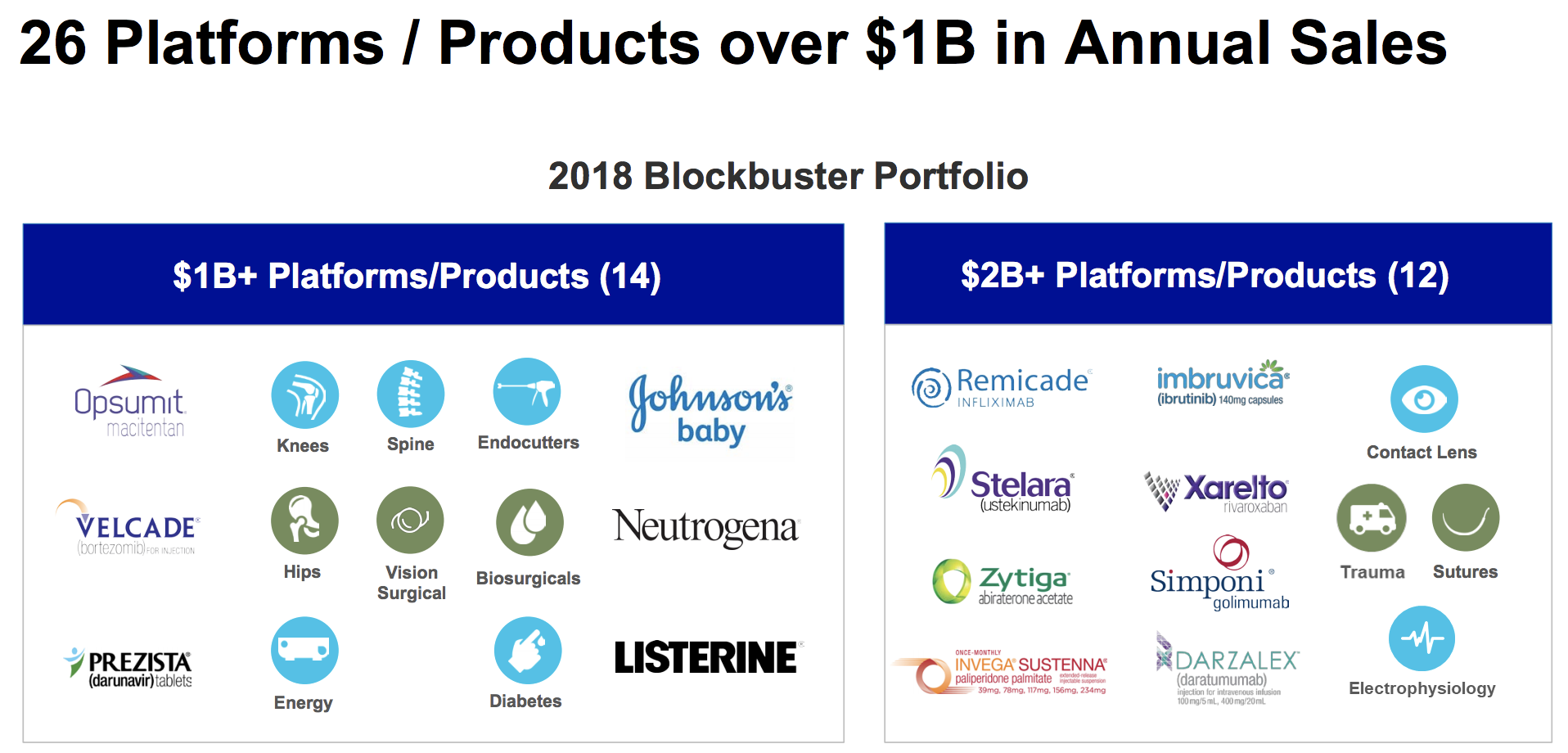
To remain competitive, the company invests over $7 billion in research and development each year. While the development of new drugs is risky, Johnson & Johnson has an excellent track record and can use the predictable cash flows from its consumer businesses to steadily fund new product research.
These are all good things that Buffett looks for when he invests, and the string of lawsuits weighing on J&J seem very unlikely to threaten the firm’s dividend.
15: Delta Air Lines (DAL)
Dividend Yield: 2.8% Forward P/E Ratio: 8.2x (as of 11/18/19)
Sector: Transportation Industry: Airlines
Dividend Growth Streak: 6 years
Delta Air Lines is one of the biggest passenger airlines in the world. The company has routes servicing over 340 destinations located across more than 60 countries. Delta Air merged with Northwest Airlines in 2008 to create the largest airline in the world.
Volatile fuel prices, costly union labor forces, steep price competition, and capital intensive operations are just some of the major challenges faced by airlines. There are some positives, however.
The high costs required to operate an airline create barriers to entry. A large operator such as Delta can spread its fixed costs across all of its routes, allowing it to deliver it services more efficiently than smaller rivals or new entrants. Only so many routes between two destinations are needed as well, making it all the more difficult for a new player to gain share.
According to the Wall Street Journal, American, United Continental, Delta Air Lines, and Southwest now control more than 80% of U.S. domestic capacity, up significantly from five years ago prior to the merger consolidation activity.
It remains to be seen if this consolidation can result in a more rational competitive environment, marked by higher ticket prices and improved profitability from economies of scale and restructuring initiatives.
These qualities help Delta generate great free cash flow and earn a higher return on capital, which creates potential for faster earnings growth. Given the size of Warren Buffett’s portfolio, the firm needs to invest in rather capital intensive businesses that are big enough investment targets. Airlines apparently fit the bill, but they remain in the “too hard” bucket for me.
16: Bank of New York Mellon (BK)
Percent of Warren Buffett’s Portfolio: 1.7%
Dividend Yield: 2.6% Forward P/E Ratio: 11.9x (as of 11/18/19)
Sector: Financials Industry: Major Regional Banks
Dividend Growth Streak: 9 years
The company’s investment management business offers a range of investment strategies (e.g. equities, fixed income, alternatives), investment vehicles (e.g. mutual funds, separate accounts), and wealth management services (e.g. estate planning, private banking).
BNY Mellon’s investment services include execution and processing of trades, servicing investments (e.g. outsource middle office functions, safekeep assets), and capital and liquidity services (e.g. optimize funding and operating capital, access global markets).
Warren Buffett’s Berkshire Hathaway bought its first shares of Bank of New York Mellon during the third quarter of 2010 and boosted his stake significantly in 2017 and 2018.
One of the reasons why Warren Buffett might have been attracted to BNY Mellon is because the company is solely focused on the investment process and the investment life cycle. As a result, the firm has amassed strong market share positions across most of its businesses.
This has helped BNY Mellon build up sizable scale in its markets, enabling it to provide the most cost-effective and comprehensive services to its clients.
The company seems very likely to remain a pillar of the world’s investment infrastructure and will continue being relevant and highly profitable for many years to come. The business also stands to benefit if interest rates normalize.
17: M&T Bank (MTB)
Dividend Yield: 2.5% Forward P/E Ratio: 12.0x (as of 11/18/19)
Sector: Financials Industry: Major Regional Banks
Dividend Growth Streak: 2 years
The company acquired Hudson City Bancorp in late 2015 for $5.2 billion, increasing its loan portfolio by nearly 30% while providing meaningful opportunities for cost savings and growth in adjacent markets.
The deal further improves M&T regulatory capital ratios, was immediately accretive to book value per share, and offers an attractive internal rate of return of about 18%.
M&T has been one of Berkshire Hathaway’s stock picks since Buffett bought preferred stock in the company back in 1991. His shares later converted into common stock about five years later.
As a result, M&T has consistently outperformed its peers as measured by profitability, efficiency, and net charge-off ratios. The company has also grown its net operating earnings per share by 15% per year since 1983 and avoided posting a loss each year since 1976, steadily compounding its value along the way.
Shareholders have also been rewarded over this time period, enjoying 13% annualized dividend growth since 1983 and an annual total return north of 17% since 1980 – that’s among the 30 best returns of all U.S.-based stocks that traded publicly since 1980.
18: Procter & Gamble (PG)
Percent of Warren Buffett’s Portfolio: 0.02%
Dividend Yield: 2.4% Forward P/E Ratio: 24.3x (as of 11/18/19)
Sector: Consumer Staples Industry: Soap & Cleaning Preparations
Dividend Growth Streak: 62 years
Buffett had gradually been reducing his stake in P&G over the last decade and announced an agreement in late 2014 to buy Duracell from P&G in exchange for his shares of P&G.
The deal closed in 2016, so Buffett’s remaining P&G stake is extremely small. However, Berkshire Hathaway likely wanted to own Duracell because of its strong brand recognition and market share (25%). It’s also worth noting that Duracell was part of P&G’s acquisition of Gillette, so Buffett had plenty of familiarity with the company already.
19: Synchrony Financial (SYF)
Percent of Warren Buffett’s Portfolio: 0.3%
Dividend Yield: 2.4% Forward P/E Ratio: 8.3x (as of 11/18/19)
Sector: Financials Industry: Consumer Loans
Dividend Growth Streak: 3 years
Warren Buffett is no stranger to Synchrony Financial’s business (credit cards), which was the consumer finance unit spun out from General Electric in 2015. Berkshire had a stake in GE since the financial crisis, and the firm owns a stake worth more than $10 billion in American Express (AXP) and smaller positions in Visa (V) and Mastercard (MA).
Synchrony’s card volume should presumably rise over time as its partners continue expanding their businesses and more shopping takes place online, which requires greater use of credit cards rather than cash.
SYF’s stock sold cratered nearly 20% in late April 2017 after reporting weak earnings. The company’s revenue grew 14% year-over-year, but investors worried after seeing that Synchrony increased its provision for loan losses by 45%, reducing the earnings outlook for 2017 and bringing into question the quality of the firm’s loan book.
Berkshire saw an opportunity to pounce on the stock and took it. Buffett seems to believe that Synchrony has a number of long-term growth opportunities and that its spread business remains in good shape, even after accounting for the higher charge-off rate.
20: Travelers Companies (TRV)
Percent of Warren Buffett’s Portfolio: 0.4%
Dividend Yield: 2.4% Forward P/E Ratio: 12.8x (as of 11/18/19)
Sector: Financials Industry: Property and Casualty Insurance
Dividend Growth Streak: 14 years
Buffett loves the insurance industry’s business model. Specifically, property and casualty insurers like Travelers collect money upfront when they sell a new policy. However, until claims are made, they don’t have to pay the money back.
In the meantime, this pool of money can be invested in stocks and bonds to earn a return. So long as the insurer is skilled at risk management, in theory it should mint money.
Travelers certainly fits the bill and has proven to be a disciplined operator over the years. Throughout the last five years the firm’s average combined ratio (incurred losses and expenses divided by earned premiums) sits below 100% in both its commercial and personal insurance lines, meaning they turned a profit on average before taking investment gains into account.
With such impressive scale, including being the only carrier with a top five market position in all major commercial product lines, Travelers also benefits from the vast amounts of claim data it can crunch to better price its policies. The firm can also meet more of its customers’ needs, gaining greater wallet share and efficiencies.
Thanks to these advantages, management targets a mid-teens return on equity over time, which is about double the industry average. However, the underwriting cycle is notoriously cyclical due to its high competitive intensity; anyone with enough capital can sell an insurance policy.
Travelers has shown great discipline by pulling back on growth when the industry’s policy terms are unfavorable, helping preserve its profitability.
Simply put, Travelers possesses many of the qualities Buffett likes in a business. TRV’s stock declined more than 15% from its January 2018 high through early July 2018, providing an opportunity for Berkshire to initiate a position.
The property and casualty insurance industry faced tough times last year due to an unusually high number of natural catastrophes, but Berkshire’s ground-level visibility and conviction to put some money to work in Travelers suggests better times could be ahead.
21: Goldman Sachs (GS)
Dividend Yield: 2.3% Forward P/E Ratio: 9.3x (as of 11/18/19)
Sector: Financials Industry: Investment Brokers
Dividend Growth Streak: 7 years
Warren Buffett’s history with Goldman Sachs dates back to the financial crisis. Berkshire Hathaway purchased $5 billion shares of preferred stock that paid a high-yield dividend of 10%.
Warren Buffett also received warrants that were later converted into roughly $2 billion of Goldman Sachs’ shares.
The company remains the number one ranked merger advisor and equity underwriting franchise and does investing banking business with over 8,000 clients across 100 countries. The firm clearly dominates the M&A market.
While banks are still contending with a challenging regulatory and macro environment today, Goldman will remain a key player in finance for decades to come.
22: Bank of America (BAC)
Percent of Warren Buffett’s Portfolio: 12.4%
Dividend Yield: 2.2% Forward P/E Ratio: 11.2x (as of 11/18/19)
Sector: Financials Industry: Diversified Banks
Dividend Growth Streak: 6 years
Warren Buffett became involved with Bank of America back in 2011 when he purchased $5 billion of preferred stock yielding 6% and received warrants for 700 million shares that Berkshire could exercise over the next 10 years.
“As recently as 2014, Bank of America’s results were dogged by tens of billions of dollars in penalties over financial-crisis era issues. Since then, the company’s legal problems have eased and it has made a concerted effort to cut costs and focus on safer businesses like lending to consumers with good credit.”
Buffett is no stranger to banks and owns a number of financial services firms in Berkshire’s portfolio. As long as they manage risk well and are conservatively run, banks mint money. Bank of America made one bad decision after another leading up to the financial crisis, but Buffett is clearly a believer in its new leadership and their ongoing turnaround plans for the company.
23: Mondelez International (MDLZ)
Percent of Warren Buffett’s Portfolio: 0.01%
Dividend Yield: 2.1% Forward P/E Ratio: 20.8x (as of 11/18/19)
Sector: Consumer Staples Industry: Miscellaneous Food
Dividend Growth Streak: 6 years
Kraft Foods spun off Mondelez in October 2012. Mondelez is a giant food company focused primarily on snack products (85% of sales). The company owns iconic brands such as Oreos, Ritz, Chips Ahoy, Cadbury, and Trident.
Berkshire Hathaway’s small position in Mondelez dates back to late 2012 when Kraft Foods completed its spin-off of the company through a stock distribution.
Warren Buffett was an existing Kraft Foods shareholder and therefore received shares of Mondelez.
Given Berkshire Hathaway’s stake in Kraft Heinz, we know that Buffett likes this type of business. It’s simple to understand, sells essential products, owns a portfolio of strong brands, generates highly predictable cash flows, and can cut costs to drive margins higher.
The global snacking market also offers plenty of room for growth. The company estimates its size at more than $1 trillion and expects growth to be driven by rising consumption in emerging markets.
With number one global market share positions in biscuits, candy, and chocolate, Mondelez should benefit over time as consumption grows.
While Mondelez is far from an exciting business, Warren Buffett’s “slow and steady” investment strategy has been a good one.
24: American Express (AXP)
Dividend Yield: 1.4% Forward P/E Ratio: 13.7x (as of 11/18/19)
Sector: Financials Industry: Miscellaneous Services
Dividend Growth Streak: 8 years
American Express is one of Warren Buffett’s oldest and most successful stock picks. Buffett first invested in American Express in the mid-1960s, and the company remains one of his largest positions today.
While the competitive environment has intensified and new cardholder growth has become more challenging to come by, Warren Buffett’s massive unrealized gains on his shares of American Express will likely keep him in the stock for a long time to come (his tax bill will be enormous once he sells).
25: Southwest Airlines (LUV)
Percent of Warren Buffett’s Portfolio: 1.4%
Dividend Yield: 1.3% Forward P/E Ratio: 12.3x (as of 11/18/19)
Sector: Transportation Industry: Airlines
Dividend Growth Streak: 8 years
As a result, full-service airlines can never compete with Southwest on cost, and the airline has been better able to survive the industry’s unpredictable ups and downs compared to its rivals.
Berkshire Hathaway began buying shares of Southwest during the fourth quarter of 2016, adding a fourth airline holding to its portfolio.
Given the amount of consolidation that has taken place in the airline industry over the last decade (the four largest carriers control over 80% of U.S. domestic capacity), Buffett likely believes “this time is different.”
With more power resting in fewer hands, the airline industry could finally become a more rational and profitable market for the long term. Many investors are biased against the industry given its checkered history, potentially setting up a great investment opportunity. Buffett’s smattering of bets on four different airlines seems to indicate he is bullish on the entire space rather than a single operator.
Remember the last part of Warren Buffett’s quote that we reference above:
“If [the airline industry] ever gets down to one airline it will be a wonderful business…”
26: American Airlines (AAL)
Dividend Yield: 1.4% Forward P/E Ratio: 5.4x (as of 11/18/19)
Sector: Transportation Industry: Airlines
Dividend Growth Streak: 0 years
The high costs required to operate an airline create barriers to entry. A large operator such as American Airlines can spread its fixed costs across all of its routes, allowing it to deliver it services more efficiently than smaller rivals or new entrants. Only so many routes between two destinations are needed, too, making it all the more difficult for a new player to gain share.
It remains to be seen if this consolidation can result in a more rational competitive environment, marked by higher ticket prices and improved profitability from economies of scale and restructuring initiatives.
27: Apple (AAPL)
Percent of Warren Buffett’s Portfolio: 25.9%
Dividend Yield: 1.2% Forward P/E Ratio: 20.2x (as of 11/18/19)
Sector: Technology Industry: Mini Computers
Dividend Growth Streak: 7 years
Apple sells smartphones, tablets, computers, and an assortment of software, services, and accessories. iPhones have been the biggest driver of Apple’s growth and accounted for approximately 63% of the company’s total revenue last fiscal year. Apple computers (Macs) accounted for 10% of sales, and iPads made up another 7%. Software, services, and sales of other hardware such as iPods accounted for the remaining 21% of Apple’s revenue.
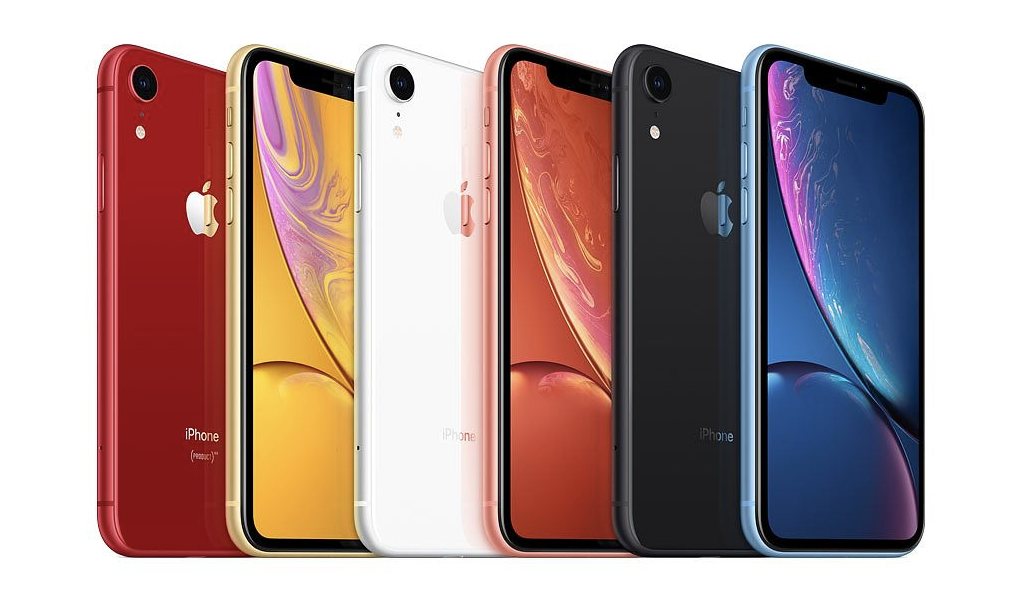
Apple is also a free cash flow machine. Over the last decade, Apple’s free cash flow grew from 25 cents per share in fiscal year 2005 to $12.80 in fiscal year 2019. Throughout that period, Apple’s annual return on equity averaged an outstanding 30%.
Of course, history doesn’t repeat itself – especially in the tech sector. Much of Apple’s success was fueled by the mass adoption of smartphones. That market is now saturated, which has caused Apple’s growth to cool off and had sent its stock down nearly 30% before Berkshire stepped in.
As a result, Buffett was able to buy in to the world’s most valuable brand for less than 11 times earnings. Buffett likely didn’t buy Apple for its smartphone franchise but rather for its future growth opportunities. As usual, he is looking out a number of years while the market is focusing on Apple’s next few quarters, which will likely remain challenged due to smartphone saturation.
From self-driving cars to virtual reality, an expanding array of high-margin services, and a slew of other smart devices and software applications yet to be invented, there are numerous paths Apple can pursue for growth.
Buffett generally prefers to invest in more predictable businesses that don’t have to reinvent themselves, which makes his bet on Apple a bit surprising.
28: Costco (COST)
Percent of Warren Buffett’s Portfolio: 0.6%
Dividend Yield: 0.9% Forward P/E Ratio: 35.4x (as of 11/18/19)
Sector: Consumer Discretionary Industry: Discount Retail
Dividend Growth Streak: 15 years
Costco started in 1983 and is the largest wholesale-club retailer in the country. The company operates large membership warehouses that offer members reasonably low prices on an assortment of products covering categories such as groceries, electronics, apparel, and more.
Costco has been one of Warren Buffett’s stock picks since 2000. Berkshire Hathaway scooped up shares after the stock plunged by nearly 40% during the year.
Buffett was very familiar with the company as Berkshire’s vice chairman, Charlie Munger, served on Costco’s board in the late 1990s.
Costco’s advantages begin with its 80 million cardholders (a membership card is required to shop at Costco). The company’s large group of customers provides Costco with excellent purchasing power over its suppliers, helping keep prices below traditional wholesale or retail outlets.
Management also keeps the company focused on providing excellent value by eliminating as many frills and costs as possible. Costco stores are far from extravagant on the inside and even eliminate the use of bags at checkout to save money and price their products lower.
As a result of its low prices, quality merchandise, and simple shopping experience, Costco’s membership renewal rate has been excellent at around 90%.
What’s held Buffett back from buying more of this wonderful business? Unlike its products, the stock rarely looks like a bargain.
In hindsight, Berkshire surely wishes it had loaded up on more shares of Costco back in 2000.
29: Moody’s (MCO)
Percent of Warren Buffett’s Portfolio: 2.4%
Dividend Yield: 0.9% Forward P/E Ratio: 25.3x (as of 11/18/19)
Sector: Financials Industry: Miscellaneous Services
Dividend Growth Streak: 10 years
Warren Buffett bought his first shares of Moody’s back in 2000 around the time that the company went public.
Warren Buffett probably liked Moody’s because of its duopoly position with Standard & Poor’s (regulations have limited the number of ratings agencies), strong pricing power, well-known brand, and essential services (e.g. a company can’t issue a bond without a ratings agency).
Today’s low interest rate environment has led to significant bond issuances around the world, which has helped lift their businesses.
Moody’s continues to be a free cash flow machine and looks to remain a force in the global financial markets for a long time to come.
30: Sirius XM (SIRI)
Dividend Yield: 0.8% Forward P/E Ratio: 30.3x (as of 11/18/19)
Sector: Consumer Discretionary Industry: Radio & TV Broadcasting
Dividend Growth Streak: 3 years
Sirius is a satellite radio company and was founded in 1990. The company makes money by transmitting a number of premium satellite radio channels on a subscription fee basis to its more than 34 million subscribers. Its content covers everything from sports, music, and entertainment to weather, news, comedy, and traffic.
Berkshire Hathaway initiated a position in Sirius during the fourth quarter of 2016, but his familiarity with the company dates back much further. Sirius is controlled by Liberty Media Corporation, a company Buffett is also invested in.
What is the key to Sirius’s successful business model? A base of more than 30 million paying subscribers generates healthy recurring revenue, and every incremental subscriber has a high incremental margin. In other words, it doesn’t cost Sirius much to add a new customer, dropping much of the new revenue straight to the company’s bottom line and increasing margins over time.
As penetration rates continue creeping higher and auto sales grow, Sirius’s business will continue expanding. Breaking into Sirius’s relationships with automakers would be extremely difficult, protecting the company. While the rise of digital music services such as Pandora could pose a threat to satellite radio as cars become more connected, Sirius also has its own internet radio service to help it remain relevant.
Investors should note that Sirius only began paying quarterly dividends in November 2016.
31: Globe Life (GL)
Dividend Yield: 0.7% Forward P/E Ratio: 14.1x (as of 11/18/19)
Sector: Financials Industry: Life Insurance
Dividend Growth Streak: 14 years
Globe Life, formerly known as Torchmark, is a major provider of life and health insurance products. The company primarily distributes its insurance products through exclusive agency and direct response marketing channels and targets the middle-income market.
Warren Buffett’s stake in Globe Life dates back more than 15 years, and Buffett is no stranger to insurers. After all, one of his most legendary investments ever was Geico.
The insurance business model is an enticing one because insurers receive money upfront when they write new policies, but they don’t have to pay the money back until claims are made.
In the meantime, they can invest policy premiums in bonds and stocks to earn a return. As long as the insurance company is savvy and conservative when it comes to risk management, they can mint money.
As a testament to its sturdiness, Globe Life generated a double-digit return on equity throughout the financial crisis.
Globe Life seems likely to remain in Berkshire Hathaway’s portfolio for a long time to come as it continues compounding its earnings.
32: Visa (V)
Percent of Warren Buffett’s Portfolio: 0.8%
Dividend Yield: 0.7% Forward P/E Ratio: 28.9x (as of 11/18/19)
Sector: Business Services Industry: Financial Transaction Services
Dividend Growth Streak: 10 years
Berkshire Hathaway first bought Visa shares in late 2011. As a long-term investor, Warren Buffett and his team are thinking about what Visa looks like at least 10 years from now.
They are most likely encouraged by the fact that cash transactions still account for the far majority of total transactions around the world.
33: MasterCard (MA)
Dividend Yield: 0.5% Forward P/E Ratio: 32.6x (as of 11/18/19)
Sector: Business Services Industry: Financial Transaction Services
Dividend Growth Streak: 7 years
MasterCard operates the second biggest payments network after Visa and enables business and consumers to use electronic payments instead of cash and checks.
The company makes money by charging fees to card issuers and acquirers for using its transaction processing services. MasterCard collects a fee based on the number and value of transactions completed using its branded cards.
Closing Thoughts
By remaining focused on simple, high quality businesses trading at reasonable prices, we can construct a sound dividend portfolio that can deliver safe, growing dividend income for years to come.



